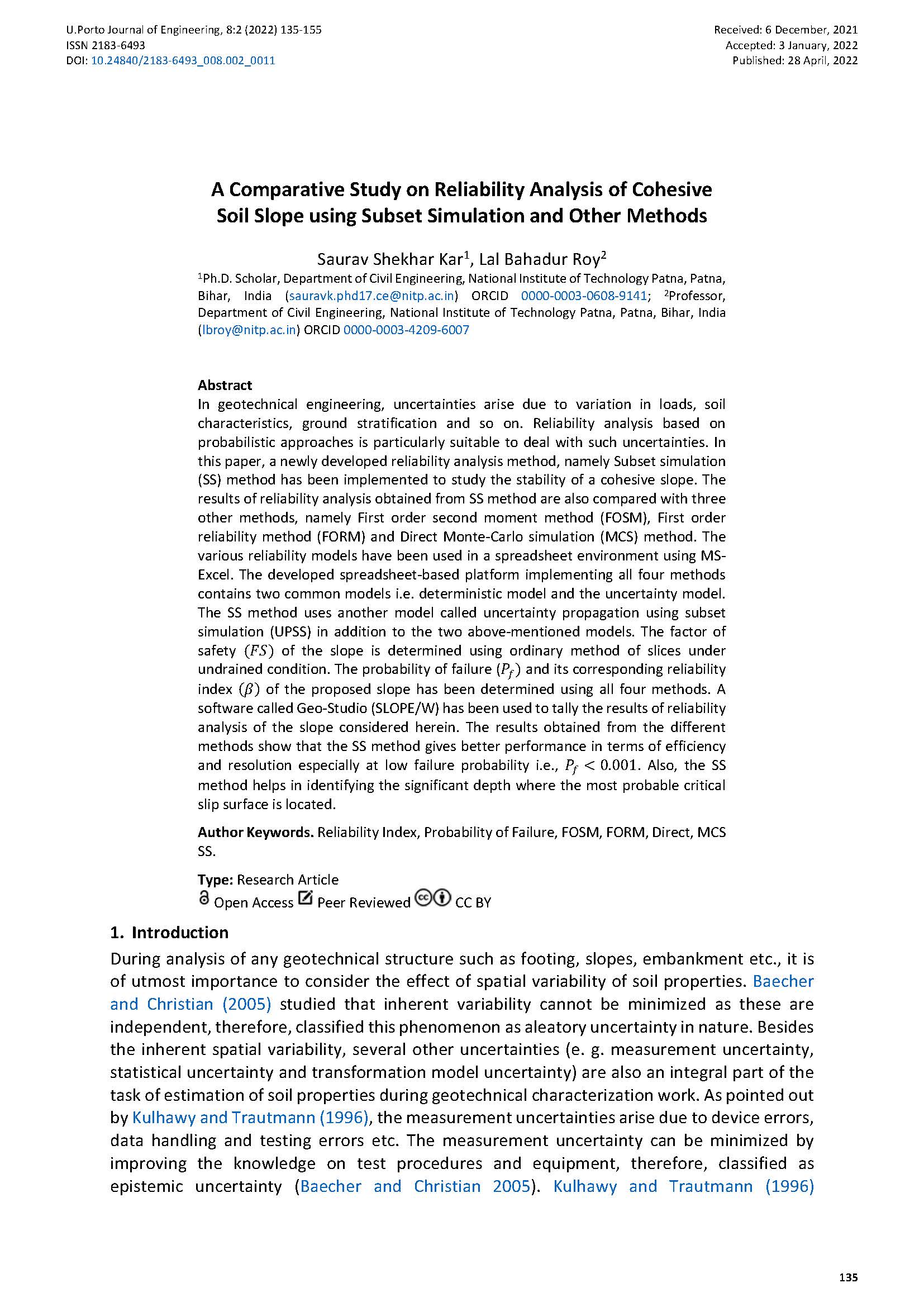A Comparative Study on Reliability Analysis of Cohesive Soil Slope using Subset Simulation and Other Methods
Main Article Content
Abstract
In geotechnical engineering, uncertainties arise due to variation in loads, soil characteristics, ground stratification and so on. Reliability analysis based on probabilistic approaches is particularly suitable to deal with such uncertainties. In this paper, a newly developed reliability analysis method, namely Subset simulation (SS) method has been implemented to study the stability of a cohesive slope. The results of reliability analysis obtained from SS method are also compared with three other methods, namely First order second moment method (FOSM), First order reliability method (FORM) and Direct Monte-Carlo simulation (MCS) method. The various reliability models have been used in a spreadsheet environment using MS-Excel. The developed spreadsheet-based platform implementing all four methods contains two common models i.e. deterministic model and the uncertainty model. The SS method uses another model called uncertainty propagation using subset simulation (UPSS) in addition to the two above-mentioned models. The factor of safety of the slope is determined using ordinary method of slices under undrained condition. The probability of failure ( and its corresponding reliability index of the proposed slope has been determined using all four methods. A software called Geo-Studio (SLOPE/W) has been used to tally the results of reliability analysis of the slope considered herein. The results obtained from the different methods show that the SS method gives better performance in terms of efficiency and resolution especially at low failure probability i.e., . Also, the SS method helps in identifying the significant depth where the most probable critical slip surface is located.
Downloads
Article Details

This work is licensed under a Creative Commons Attribution 4.0 International License.
Authors who publish with this journal agree to the following terms:
- Authors retain copyright and grant the journal right of first publication with the work simultaneously licensed under a Creative Commons Attribution License that allows others to share the work with an acknowledgement of the work's authorship and initial publication in this journal.
- Authors grant the journal the rights to provide the article in all forms and media so the article can be used on the latest technology even after publication and ensure its long-term preservation.
- Authors are able to enter into separate, additional contractual arrangements for the non-exclusive distribution of the journal's published version of the work (e.g., post it to an institutional repository or publish it in a book), with an acknowledgement of its initial publication in this journal.
- Authors are permitted and encouraged to post their work online (e.g., in institutional repositories or on their website) prior to and during the submission process, as it can lead to productive exchanges, as well as earlier and greater citation of published work (See The Effect of Open Access).

